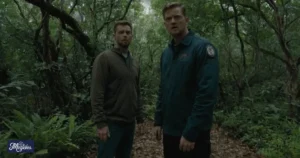Snow, with its pristine and transformative qualities, has inspired a variety of metaphors that capture its beauty, mood, and impact.
These metaphors not only enhance our descriptions of snow but also evoke the magical and serene atmosphere it creates. In this article, we’ll explore a range of metaphors for snow, each illustrating different aspects of its charm and character.
1. Winter’s White Blanket
Meaning: Snow covering the ground like a soft, cozy blanket.
Example Sentence 1: The countryside was draped in winter’s white blanket, creating a serene and peaceful landscape.
Example Sentence 2: As night fell, winter’s white blanket settled over the town, muffling sounds and adding a sense of calm.
Explanation: This metaphor conveys the idea of snow covering everything uniformly and gently, similar to a warm blanket.
2. Nature’s Shimmering Quilt
Meaning: Snow spread across the landscape like a quilt, reflecting light and creating a shimmering effect.
Example Sentence 1: The field looked like nature’s shimmering quilt, each patch of snow sparkling in the morning sun.
Example Sentence 2: The town was covered with nature’s shimmering quilt, its surface catching every ray of light and creating a dazzling display.
Explanation: This metaphor highlights the way snow can glisten and shine, similar to how a quilt might catch the light.
3. Frozen Stardust
Meaning: Snowflakes compared to tiny, sparkling pieces of stardust.
Example Sentence 1: The air was filled with frozen stardust, each snowflake drifting down like a piece of the night sky.
Example Sentence 2: As she walked through the snow, it felt like she was wading through frozen stardust, with each flake adding to the magical atmosphere.
Explanation: This metaphor emphasizes the delicate, sparkling quality of individual snowflakes, likening them to celestial dust.
4. The Silent Frost
Meaning: Snow’s ability to create a quiet, still environment.
Example Sentence 1: The city was transformed into the silent frost, with the snowfall creating an unusually quiet and peaceful night.
Example Sentence 2: Wrapped in the silent frost, the forest seemed to hold its breath, untouched and tranquil under the snow.
Explanation: This metaphor underscores how snow can absorb sounds and create a hushed, peaceful environment.
5. The Crystal Blanket

Meaning: Snow covering the ground with a sparkling, crystalline appearance.
Example Sentence 1: The landscape was adorned with a crystal blanket, each snowflake contributing to a glittering, frosty scene.
Example Sentence 2: The fields were covered in a delicate crystal blanket, making the world appear like a winter wonderland.
Explanation: This metaphor highlights the sparkling and brilliant quality of snow, emphasizing its crystalline beauty.
6. The Winter’s Veil
Meaning: Snow covering the world as if it were a mysterious, soft veil.
Example Sentence 1: The town was enveloped in winter’s veil, the snow obscuring familiar sights and giving everything a dreamlike quality.
Example Sentence 2: Through the winter’s veil, the landscape appeared ethereal and serene, with snow softening the edges of the world.
Explanation: This metaphor conveys snow’s ability to create a soft, mysterious layer over the landscape, adding a sense of enchantment.
7. The Frosted Tapestry
Meaning: Snow covering the ground like an intricately designed tapestry.
Example Sentence 1: The fields were transformed into a frosted tapestry, with every snowfall adding new patterns to the winter scene.
Example Sentence 2: The city streets were woven into a frosted tapestry, the snow creating a beautiful, intricate design across the urban landscape.
Explanation: This metaphor emphasizes the intricate and patterned appearance of snow as it settles over surfaces.
Metaphors for Summer: Evoking the Warmth and Vibrancy of the Season
8. The Icy Lace
Meaning: Snow covering surfaces with a delicate, lacy pattern.
Example Sentence 1: The windows were adorned with icy lace, the frost creating beautiful, delicate patterns that sparkled in the light.
Example Sentence 2: The trees were draped in icy lace, their branches shimmering with the delicate, frost-like snow.
Explanation: This metaphor highlights the fine, delicate quality of snow and frost, comparing it to intricate lace.
9. The Snowy Shroud
Meaning: Snow enveloping everything like a shroud, hiding and softening the landscape.
Example Sentence 1: The village was wrapped in a snowy shroud, the snowfall obscuring details and creating a soft, uniform appearance.
Example Sentence 2: Beneath the snowy shroud, the familiar landscape was transformed into a blank canvas, waiting to be rediscovered.
Explanation: This metaphor emphasizes snow’s ability to cover and obscure the landscape, creating a smooth, even surface.
10. The Arctic Blanket

Meaning: Snow covering the ground with a cold, encompassing layer.
Example Sentence 1: The Arctic blanket of snow covered the landscape, its icy surface extending as far as the eye could see.
Example Sentence 2: Under the Arctic blanket, the world was frozen in a still, cold beauty, untouched by the usual hustle and bustle.
Explanation: This metaphor conveys the vast and cold nature of snow, likening it to a blanket of arctic proportions.
FAQs
1. What are some creative metaphors for snow?
Creative metaphors for snow include winter’s white blanket, frozen stardust, and nature’s shimmering quilt. These metaphors use imaginative comparisons to describe snow’s appearance and effect.
2. How can metaphors enhance descriptions of snow?
Metaphors enhance snow descriptions by providing vivid imagery and emotional depth. For example, describing snow as a crystal blanket helps convey its sparkling and beautiful quality.
3. What does the metaphor “winter’s veil” represent?
The metaphor winter’s veil represents snow as a soft, mysterious layer covering the landscape, creating an ethereal and dreamlike quality.
4. Can metaphors for snow describe both its texture and appearance?
Yes, metaphors can describe both the texture and appearance of snow. For instance, icy lace captures the delicate texture and frosted tapestry highlights the patterned appearance of snow.
5. How do metaphors for snow contribute to storytelling?
Metaphors for snow contribute to storytelling by adding depth and vivid imagery. They help create a specific mood or atmosphere, making the setting more evocative and engaging.
Conclusion
Metaphors for snow offer a rich and varied way to describe the beauty and impact of winter’s white blanket.
From frozen stardust to the snowy shroud, these expressions capture the transformative and enchanting qualities of snow, enhancing our appreciation of the winter landscape.
By using imaginative comparisons, we can evoke the serene, magical, and often breathtaking effects of snowfall, enriching our descriptions and storytelling.

I’m Jane Austen, a language expert at Minglishs, dedicated to helping learners master English through engaging and accessible content. My passion for literature and teaching drives me to make language learning both enjoyable and effective.










